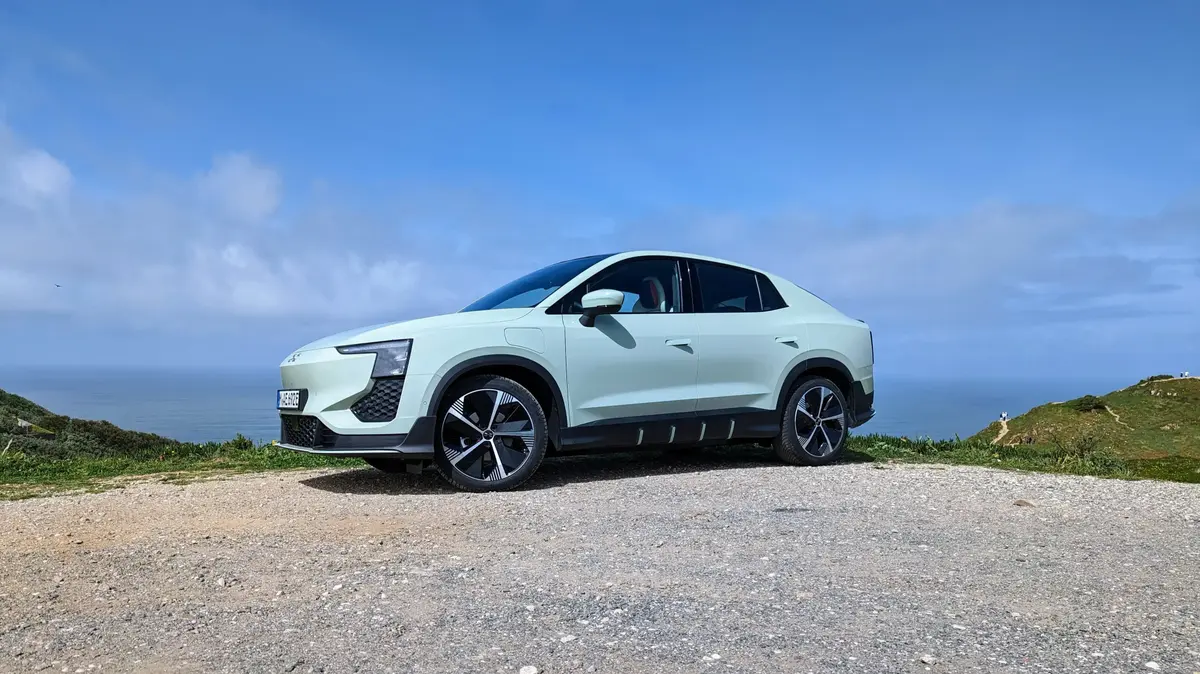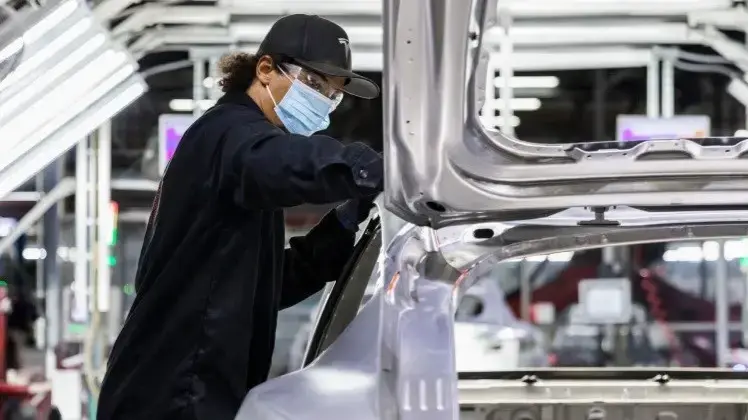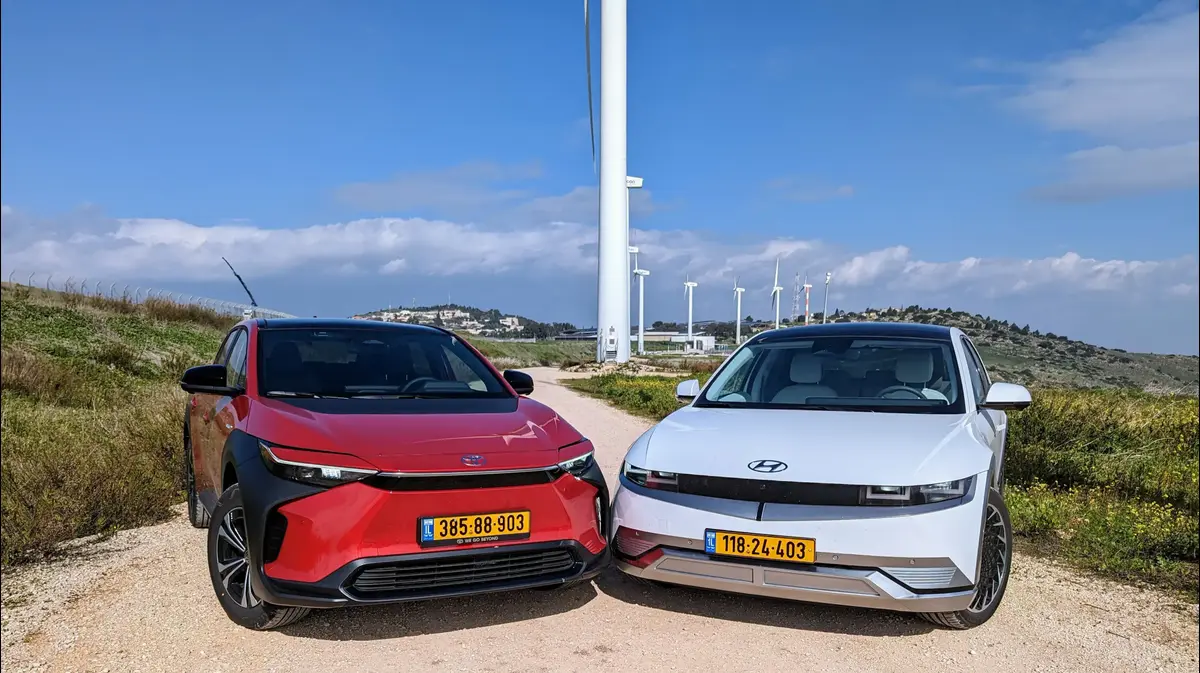vehicle
Car News
The calculator that reveals the green bluff of automakers
Do the manufacturers' promises for a "green car" stand the test of reality?
A calculator developed by American researchers makes it possible to check the environmental and economic price of new cars
Tags
electric car
Air Pollution
taxation
Taxes
New vehicle
Omar Yerushalmi, Angle
Friday, 02 July 2021, 09:48 Updated: 10:11
Share on Facebook
Share on WhatsApp
Share on general
Share on general
Share on Twitter
Share on Email
0 comments
The Lamborghini of Bologna Airport
Road test: Golf GTI
The renewed species in Israel
Tesla Model 3
Ferrari 296
Electric car batteries
Yamaha MT-09 SP
The renewed Toyota Camry in Israel
New Lexus NX
Lamborghini is on fire
Explanation of using a system to prevent children from forgetting ...
The cameras of Netivei Israel at the Shtulim junction near Gan Yavne ...
How green is your car?
(Angle - Angle - News Agency of the Israeli Association of Ecology and Environmental Sciences)
In January 2021, Elon Musk became the richest man in the world (at least temporarily) with no less than $ 185 billion.
While most industries were hit hard by the Corona crisis, the electric car market boiled over.
Shares of Tesla, the company that manufactures electric cars owned by Musk, jumped 743 percent in 2020 alone.
How justified is the hype around this leap and are electric vehicles really better environmentally?
A new internet calculator that allows you to calculate how much carbon dioxide each vehicle emits provides possible answers.
More on Walla!
Conquers the market: Tesla at the top of the dedication of premium vehicles
To the full article
The transportation industry produces about 16 percent of the total carbon dioxide emissions into the atmosphere, which accelerate the process of global climate change.
Of this amount, 45 percent of emissions come from consumers' use of private vehicles.
A quick calculation leads to the conclusion that resetting emissions in the private car market will lead to a reduction of almost 8 percent of the total global emissions of transportation in the world - a significant contribution to the fight against the climate crisis.
But how exactly are the emissions of the automotive world reset?
According to the US Department of Energy, one of the main ways is by switching to electric vehicles.
The automotive industry is responsible for about 16 percent of the total carbon dioxide emissions, but it is the easiest to handle (Photo: Keinan Cohen, Keinan Cohen)
Of course, it is not enough just for the private consumer to buy an electric vehicle.
"Electric vehicles do not burn, so there is no pollution inside cities, but if you generate electricity from perishable fuels then you simply create emissions elsewhere," explains Prof. Barak Fishbein of the Technion's Faculty of Civil and Environmental Engineering.
"So if we do not change our energy sources to renewable electric cars will not reduce emissions at the global level."
Therefore, when it comes time to buy a new car, beyond its price and level of safety, it is important that the consumer also understands how much greenhouse gases he will emit throughout his life - from the moment of production to the moment of recycling (hopefully) of its parts.
In the new internet calculator you can get exactly this information about almost every vehicle on the market - whether it is powered by fossil fuels or by electricity.
The calculation of the emission of the pollution starts from the factory in which it is created until the end of its life on the road (Photo: Keinan Cohen, Keinan Cohen)
Greener is not always more expensive
The calculator developed by a team of researchers from MIT has over 300 popular vehicles in the US, most of which can also be found in Israel. The calculator allows you to see on a graph where your vehicle is located (or the one you intend to buy) in two parameters: Operating price per month , The fuel and its treatment) and greenhouse gas emissions per mile (1.6 km).
The relative position of the vehicle models on the graph clearly illustrates the differences in emissions between different types of vehicles - but also the fact that you do not have to pay too high a price to find a green alternative to polluting vehicles. .
Mini SE electric (Photo: Keinan Cohen)
Although the numbers reflect the cost in the US, where the tax on vehicles is lower, but to illustrate, the vehicle that costs almost the cheapest per mile (third place), is the Mini Cooper SE electric. When you look at its average operating price per month you will pay a little less. $ 300 despite its high initial cost: $ 22,400 (price list price in Israel: NIS 200-239 thousand) During the trip, the mini SE will "emit" 112.5 grams of carbon dioxide per 1.6 kilometers (the emission calculation is based on the pollution associated with electricity generation in the United States This is compared to another popular electric vehicle, a Tesla Model S that will "emit" 125 grams of carbon dioxide per mile and will cost $ 69,420 (in Israel: NIS 340-520 thousand) and $ 720 per month on average.
Toyota Prius, meets emissions targets by 2040 (Photo: Keenan Cohen, Keenan Cohen)
The graph weights two targets for reducing greenhouse gas emissions by 2030 and 2040, which if we meet them we can prevent global warming by more than 2 degrees on average.
To meet the target for 2030, the average vehicle must emit 300 grams of carbon dioxide per mile, in order to meet the target for 2040 the constant is 180 grams of carbon dioxide.
According to the calculator, among all vehicles powered by an internal combustion engine (diesel or diesel) , There is not even one that meets the 2030 emissions target. Hybrid vehicles, like the Honda Accord, for example, will allow the 2030 target to be met and the Toyota Prius will be very close to the 2040 target. Only fully electric vehicles will meet the 2040 target.
Hyundai Ionic, popular and green (Photo: Keinan Cohen)
Corolla or Ionic?
And what is happening in Israel?
The most popular vehicle in Israel, the Toyota Corolla (which costs NIS 132,900 in Israel) and sold 12,000 units in 2020, is located in a relatively good location and emits only 156 grams of carbon dioxide per kilometer according to MIT's calculator.
However, the second most popular vehicle in Israel, the Hyundai Ionic (NIS 143,900, price list price), of which 9,900 units were sold in 2020, emits less than that and almost meets the target of greenhouse gas emissions for 2050 - 125 grams of PDH per kilometer. For only a shekel, the electric Ionic can be purchased - the least polluting vehicle currently on the market according to the calculator that emits only 62.5 grams of PDH per kilometer.
The green tax benefit caused a completely opposite effect from the original intention (Photo: Nir Ben Tovim, PR)
The double damage of green taxation
However, it does not appear that the way to reset plates in the car market will be simple in Israel.
Findings from a new study by researchers at Ben-Gurion University indicate the difficulty in determining the correct taxation policy.
The researchers examined how the green tax reform introduced 12 years ago affected Israeli consumer behavior.
The reform currently sets a purchase tax of 83 percent on ordinary cars, where up to NIS 17,000 can be deducted from the final price, depending on the level of pollution of the vehicle.
The findings of the study were not encouraging.
The researchers saw that even in Israel, despite steps towards a greener policy, the result on the ground was undesirable in retrospect.
The green tax reform led to the so-called "rebound effect" - the incentive to buy less polluting vehicles did work and more small and energy efficient vehicles were used, but the energy efficiency of the vehicles led to increased time on the road and retrospectively increased fuel consumption and total greenhouse gas emissions.
More on Walla!
Driver: The dairy cow of taxation and we have proof of that
To the full article
In the summary, more cars hit the road, raising the average emissions (Photo: Keinan Cohen)
The green tax reform also stipulates different tax brackets for the various vehicle categories.
The tax on ordinary vehicles is among the highest in the world.
However while the tax on polluting vehicles has not changed recently, taxes on the greener category of the hybrid vehicle have only risen in 2021 from 45 percent to 50 percent.
By 2022, full taxation of 83 percent of the hybrid vehicle is expected to apply.
Taxation on electric vehicles however currently continues to stand at 10 per cent but is expected to rise by 2024 to 35 per cent.
- Passport tax: the taxation trick of electric vehicles?
- Even the tax authority understood, we need to rethink vehicle taxation
- suckers, you are all suckers
The direction is electricity, for better or worse (Photo: Keinan Cohen)
It is hoped that the expected tax increases on the hybrid category will encourage people to switch to electric vehicles instead of returning to purchasing regular vehicles.
In the meantime, before the next time you buy a car, it is advisable that you look at the Internet calculator to know exactly where the car you are considering buying stands in relation to the total emissions you want to meet the climate goals.
The article was prepared by Zavit - the news agency of the Israeli Association of Ecology and Environmental Sciences
Share on Facebook
Share on WhatsApp
Share on general
Share on general
Share on Twitter
Share on Email
0 comments












